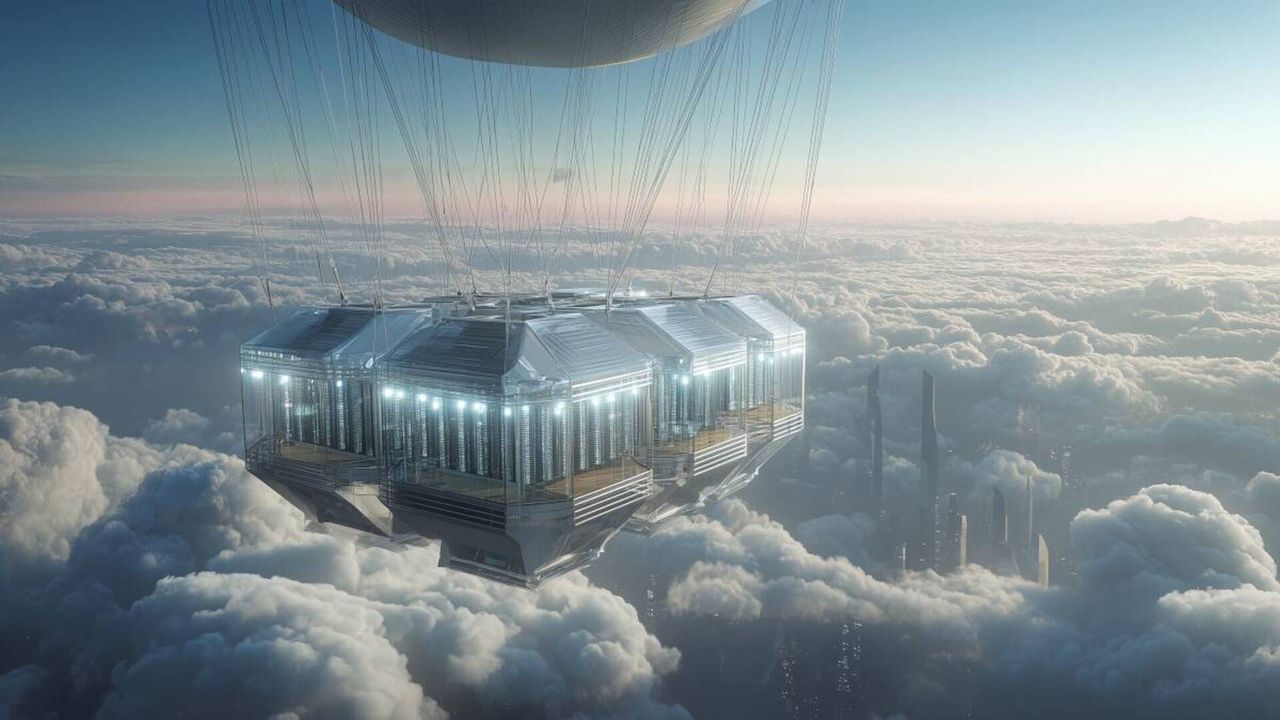
- Lenovo imagines data centers suspended above the clouds to save land and energy
- Data Spas Place Servers Near Geothermal Pools, Raising Serious Security Concerns
- Underground bunkers offer natural protection and cooling for high-density computing, or maybe not
Lenovo has revealed a series of very unconventional concepts that imagine what the data center infrastructure of the future could look like.
The company maintains that traditional data centers must evolve to support businesses, as nearly half of corporate IT buyers admit their infrastructure does not meet energy demands and carbon targets.
In response, Lenovo has proposed several unconventional designs, including one that places data centers almost literally between clouds.
Data centers above the clouds
Each design shows a different approach to driving massive CPU and AI workloads while addressing energy efficiency and sustainability issues.
The most unusual of Lenovo’s designs is the “Floating Cloud,” a data center suspended 20 to 30 kilometers above the Earth’s surface.
At that altitude, it would be entirely solar-powered and use pressurized liquid cooling systems to manage heat.
The concept eliminates ground limitations but poses significant security risks, as a structure floating above commercial airspace would be difficult to secure and vulnerable to attack.
Lenovo also envisions what it calls a “Data Spa,” a geothermal-powered data center built in a natural landscape such as a valley or hot spring.
Concept images show people walking through puddles of water just a few meters from the server racks.
The design suggests a seamless integration between nature and technology, but raises serious safety concerns.
Combining open water and critical hardware would leave any data center manager sleepless, no matter how efficient the cooling system claims to be.
A more grounded proposal is the “data center bunker,” which uses abandoned tunnels, bunkers, or underground transit systems as secure data center sites.
Lenovo claims that these underground locations “create a naturally efficient heat management system,” although anyone familiar with underground heat levels might disagree.
Still, the design offers advantages such as less land use and better physical protection, making it one of the few practical ideas in the collection.
Lenovo says future data centers must support the rapid growth of artificial intelligence tools and automation while reducing carbon emissions.
Its Neptune liquid cooling system is designed to remove up to 98% of system heat directly from the source, reducing energy use compared to traditional air cooling.
The company insists that these types of solutions are necessary as demand for AI increases and data sovereignty rules are tightened in all regions.
These designs are just concepts for now, but Lenovo’s message is clear: unless data centers evolve rapidly, the future of computing will face physical and environmental bottlenecks.
“The data center of the future will be defined by how effectively it can scale for AI, meet sustainability goals and operate at maximum energy efficiency,” said Simone Larsson, director of enterprise AI, EMEA, Lenovo.
“As computing demand accelerates, customers will increasingly look for infrastructure partners that can deliver performance without compromise… Future-proof data centers require a shift in mindset, one in which sustainability is not modernized…”
Follow TechRadar on Google News and add us as a preferred source to receive news, reviews and opinions from our experts in your feeds. Make sure to click the Follow button!
And of course you can also follow TechRadar on TikTok for news, reviews, unboxings in video form and receive regular updates from us on WhatsApp also.



